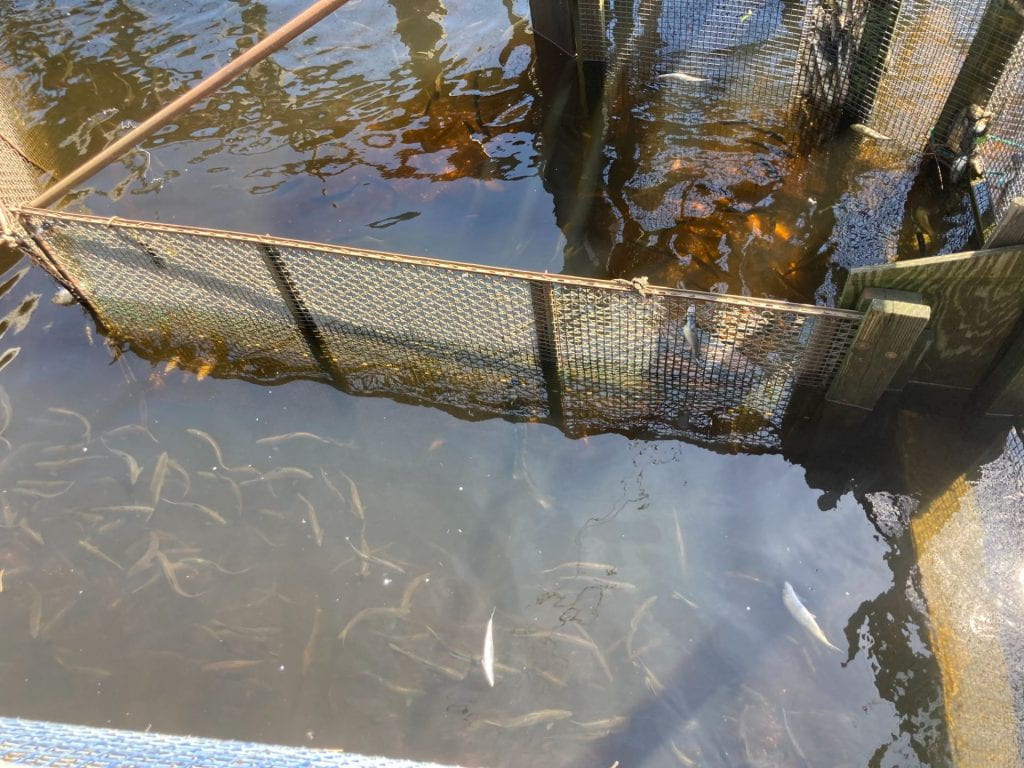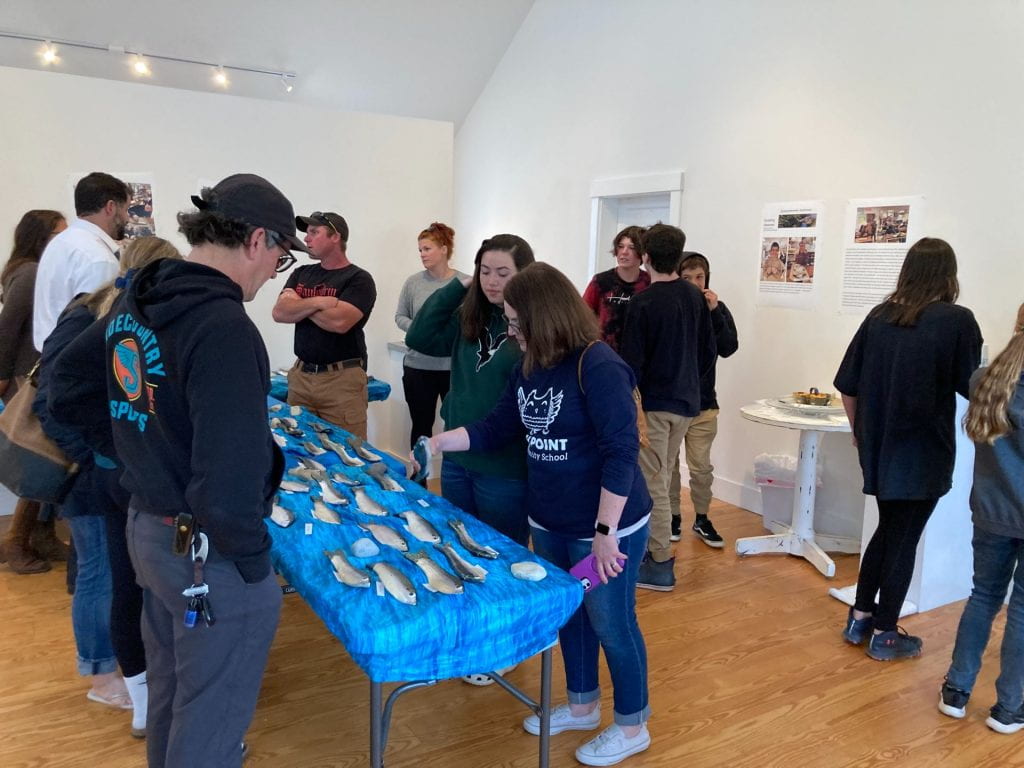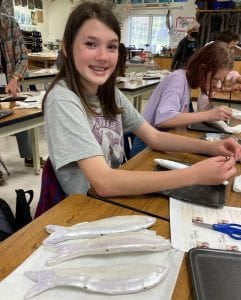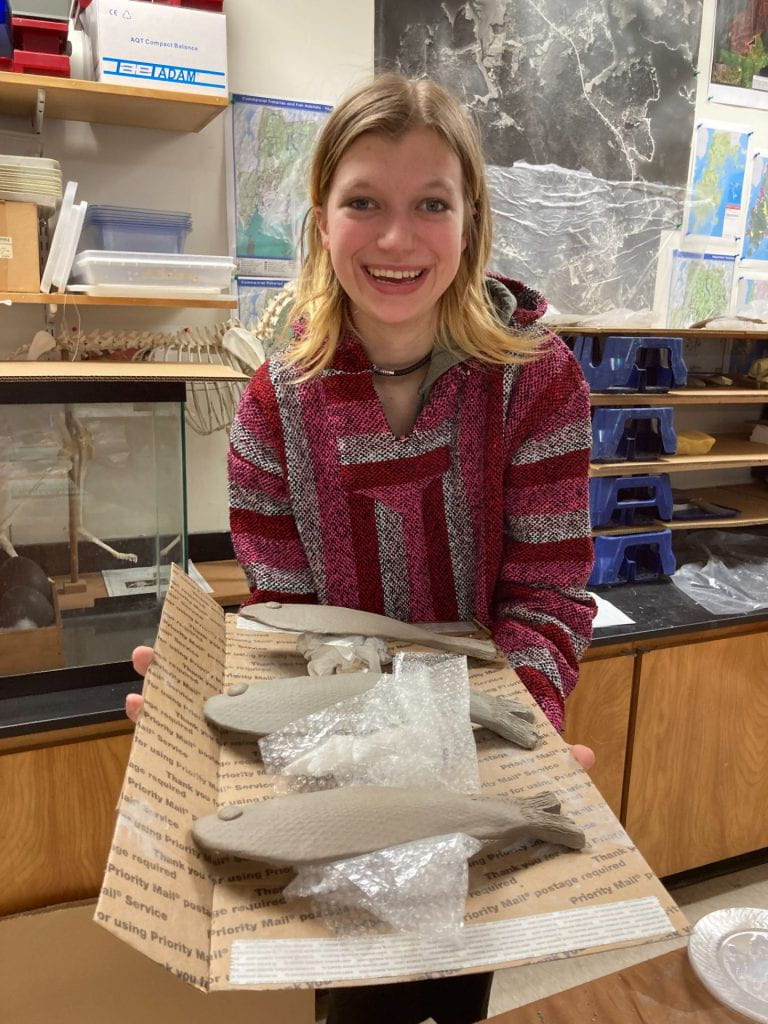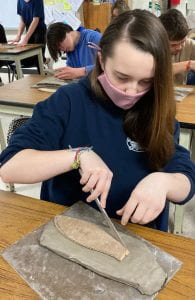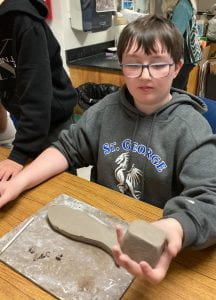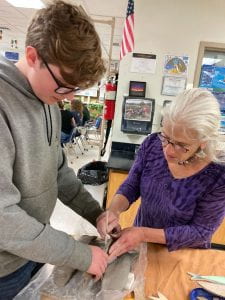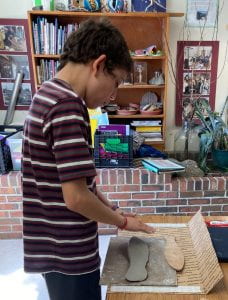Imagine alewives, swimming their way up Ripley Creek into the marsh to spawn, yet you’re viewing these forms as a dynamic sculptural mobile suspended above you, their bright shining bellies and dark backs glinting with hints of metallic iridescence. Nearby, you find an individual fish silhouette on the wall and read text that highlights a featured fact or story from the community about these fish that were once so plentiful here locally. The fish, taken together, represent a significant body of student work documenting this resource and its community connections.
On Thursday, April 7th, we began an ambitious art and service project to document the cultural and natural history of our alewife run. We want to commemorate our run so we don’t forget their history in our community, and the varied reasons that they have all but disappeared here in our marsh.
We are excited to be working with clay artist Ms. Randy Fein. Our start involved an introduction to alewives themselves, thanks to the generosity of Gerry Cushman who donated frozen fish so we could sketch them in order to get familiar with alewife anatomy and form. We also created realistic templates for our work in clay by drawing the fishes’ form on cardboard. They were later cut out by bandsaw.
Students also split into smaller groups and viewed the area where our sculptural fish will be suspended, sharing their ideas about arranging the fish, creating visual movement as well as giving thought to various constraints of the space. Artist Charles Duvall of Duvall Designs will be joining us later in the project to create this framework that the fish will be suspended from.
We are indebted to Georges River Education Foundation, the Perloff Foundation and the St. George School Fund for making this collaborative project possible.

Meeting Clay Artist Randy Fein

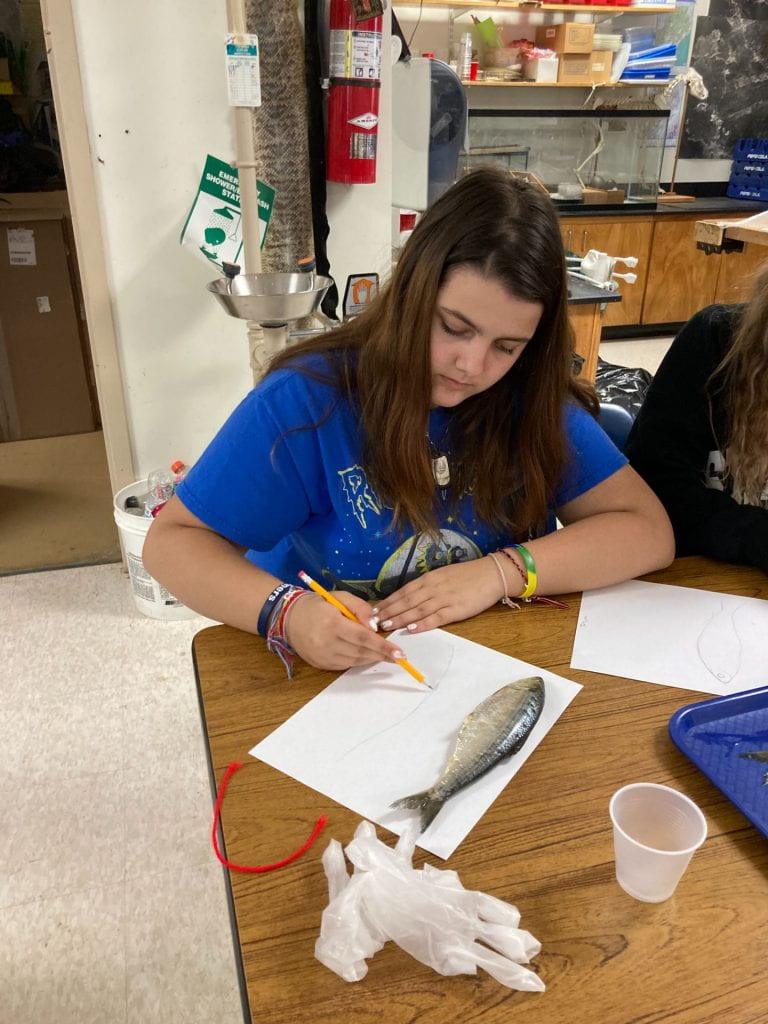








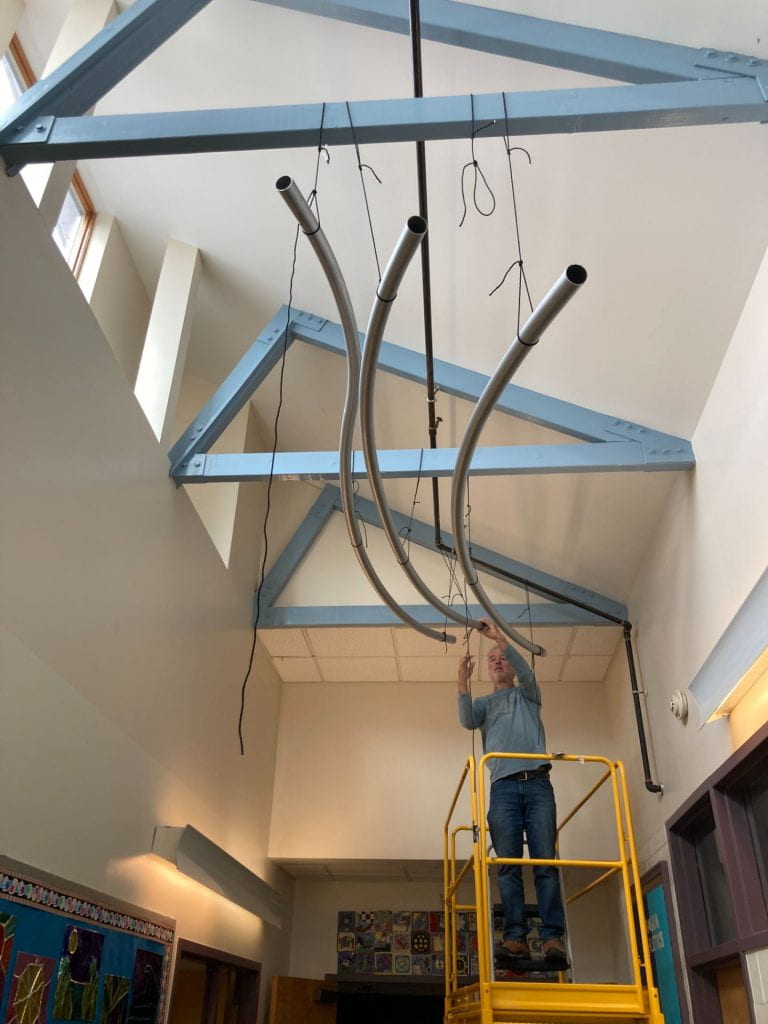











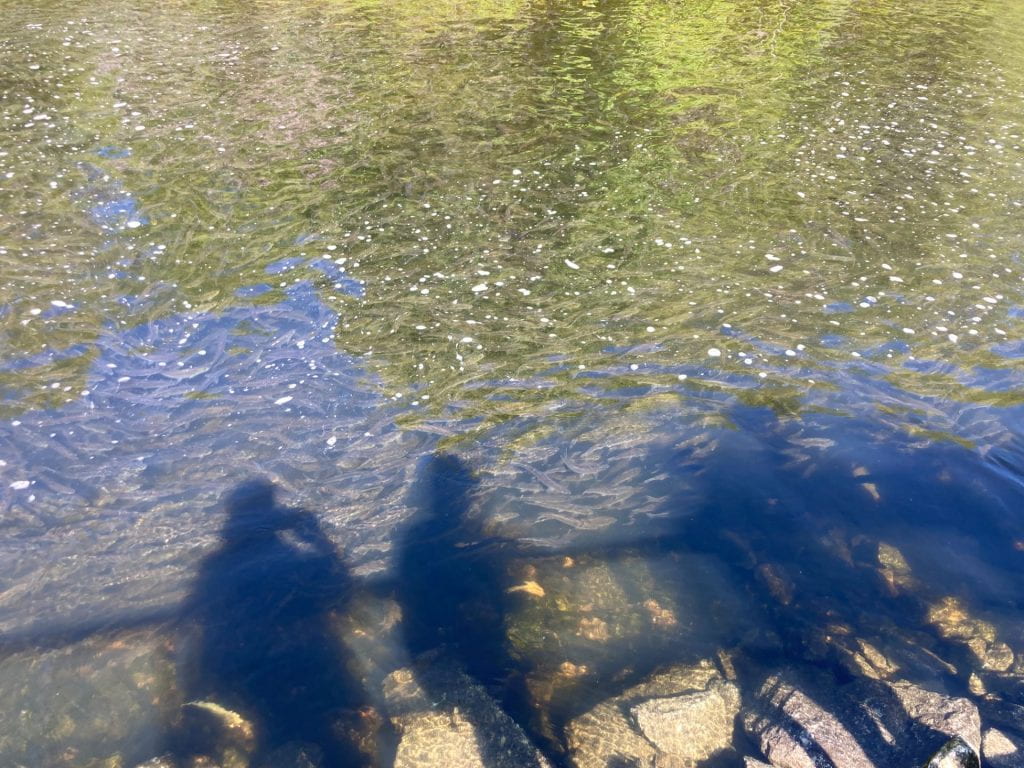
 Fish are harvested here during the week. Some of our lobstermen make the trip over here to purchase their bait.
Fish are harvested here during the week. Some of our lobstermen make the trip over here to purchase their bait.





